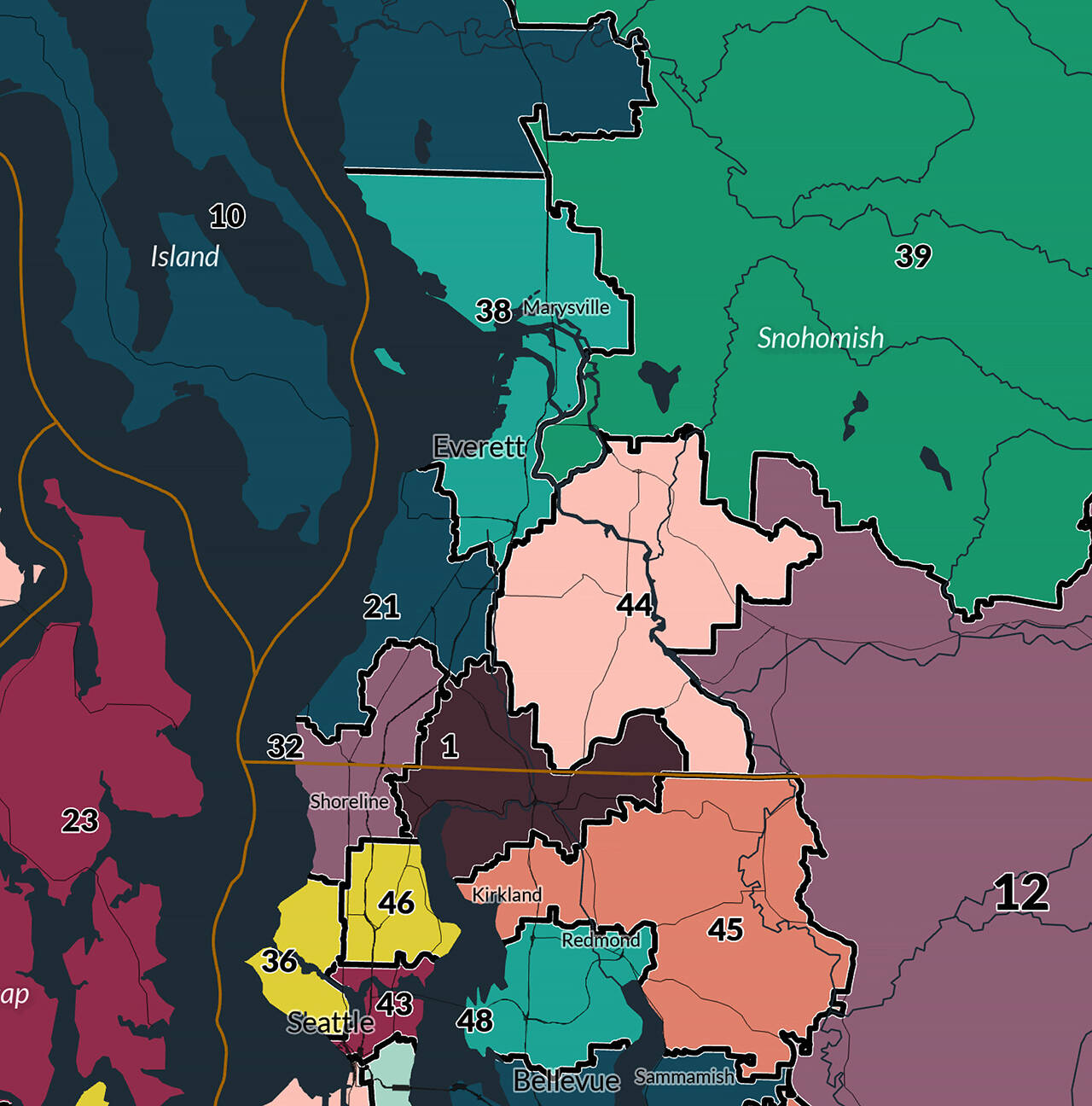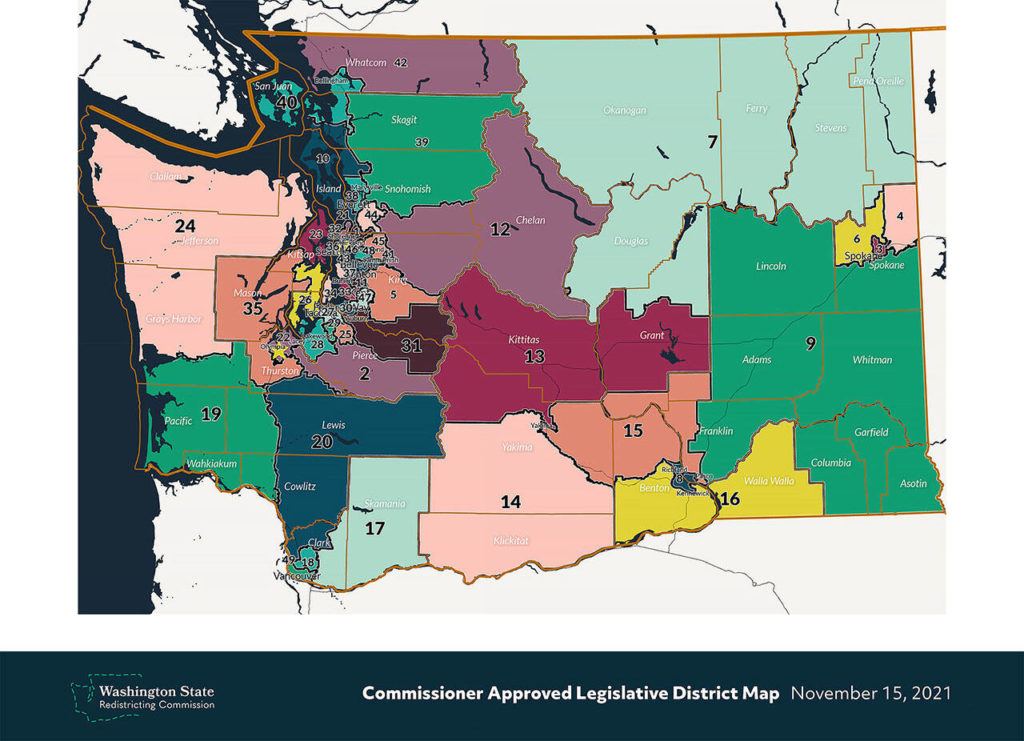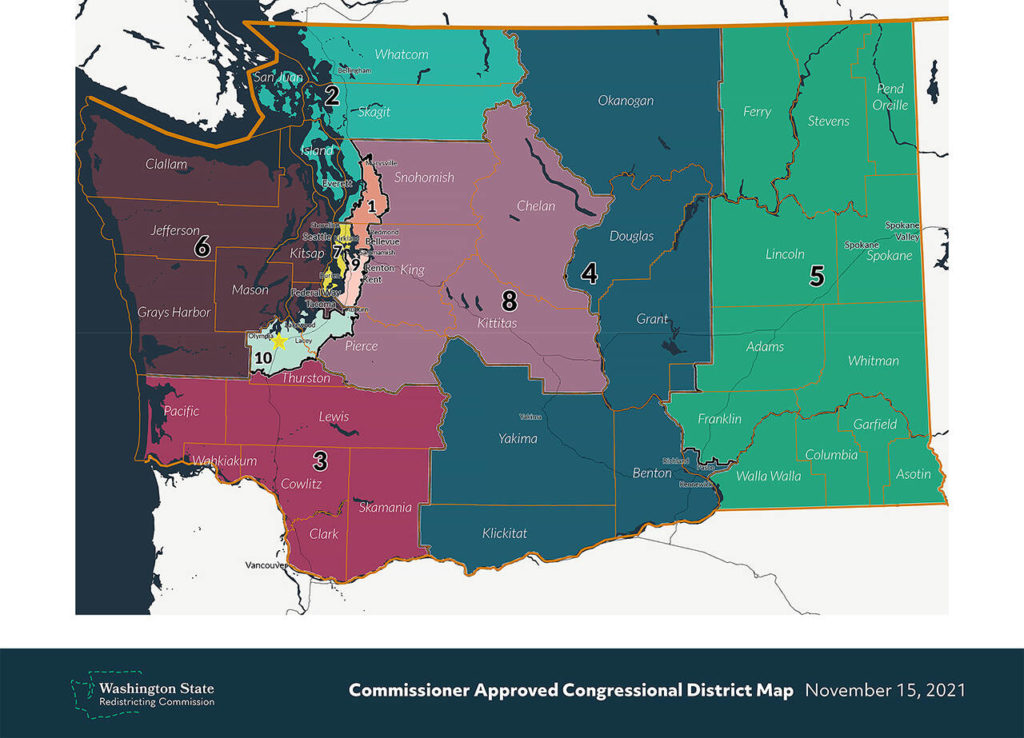Associated Press and Herald staff
The head of Washington’s bipartisan redistricting commission, which failed to meet a deadline for redrawing political maps, urged state Supreme Court justices to still consider their work now that the high court will have to complete the process.
The panel had a deadline of 11:59 p.m. Monday to approve new boundaries for congressional and legislative districts after the 2020 census but acknowledged Tuesday it did not complete the task on time.
This is the first time the panel has failed to finish its work on time since the state adopted a constitutional amendment giving redistricting authority to a bipartisan commission after the 1990 census. Under state law, the Supreme Court now has until April 30 to do the job. Maps it adopts will be in force for elections from 2022 through 2031.
“While we acknowledge we missed the deadline for our maps to be considered by the Legislature, we see no reason why the court can’t do so,” Commission Chair Sarah Augustine said in a statement late Tuesday. “These maps reflect the input of the thousands of people who took part in the process with us. It would be a shame to see these maps go unconsidered simply because the clock struck 12.”
Initially it seemed that final maps of the state’s 49 legislative and 10 congressional districts were unanimously adopted by the four voting members — Democrats April Sims and Brady Walkinshaw Pinero, and Republicans Joe Fain and Paul Graves — literally moments ahead of the deadline. It now appears those votes signaled agreement on a framework for finishing. The quartet did wind up releasing maps around 9 p.m. Tuesday.
On Wednesday, commissioners Graves and Fain issued statements expressing disappointment they did not finish on time. Both also think the nine justices should consider the panel’s maps, which reflect input of thousands of residents across the state.
“They are fair, they reflect the agreement of the four voting commissioners, and they will serve well the people of Washington,” said Graves, a former state lawmaker, in a statement.
Fain noted that the plan “is the result of the largest public outreach effort in Washington history on redistricting, and the framework for their creation had unanimous support from the commissioners.”
In an interview, Fain said he thought there is still “a good chance” the political boundaries drawn by the foursome will become law. “I certainly am encouraging the court to adopt the results of this effort.”
Despite the plea to the Supreme Court, many were critical of the process carried out by the panel, especially in the final hours Monday night, when there were complaints that deliberations were closed to the public and may have violated open meetings law.
“I believe strongly in open government,” said Graves. “So I am more than disappointed that the chaos Monday evening led to a lack of transparency and open deliberation. We did not live up to the standard for open government that the commission promised, that I expect from my government, and that the people deserve.”
The commission members, who scheduled a news conference for Thursday, blamed their failure to meet the deadline on the late release of Census data, combined with technical problems and a deadline that was six weeks earlier than it was for prior commissions.
“But that is no excuse — we should have been able to make the deadline even under these difficult conditions,” Fain said. “I am very pleased by the efforts and the unprecedented commitment to finding a resolution that the chair, and Commissioner Sims and Commissioner Graves, demonstrated.”
He and Walkinshaw negotiated an agreement on the congressional district maps.
The panel’s work was denounced by Redistricting Justice for Washington, which had sought a majority Hispanic legislative district in the agricultural Yakima Valley.
The legislative map released Wednesday by commissioners creates a majority-minority district in that region. However, Senate Majority Leader Andy Billig, D-Spokane, said Wednesday it may not pass muster with federal law.
“While there appears to be many features of the map that make sense for the goals of fair representation and keeping communities of interest together, I do have a significant concern that the Yakima Valley district may not be compliant with the federal Voting Rights Act,” Billig said in a statement. “I hope the Supreme Court will closely examine this section of the map and use its authority to create a map that ensures Latino voters in the Yakima Valley can elect the candidate of their choice, as is required by federal law.”
Meanwhile on Tuesday, the state Supreme Court said it was prepared to take on the redistricting job.
“If it is confirmed that the commission missed the Nov. 15th deadline … the Supreme Court shall adopt a plan by April 30, 2022,” the court said in a statement. “The court will await filings from the parties.”
The April 30 deadline would give candidates and incumbents less than three weeks to know the boundaries of their U.S. House and legislative districts before the May 20 deadline to file for office.
Currently, Washington has seven Democratic U.S. House members and three Republicans. The Legislature is controlled by Democrats.
Washington’s Supreme Court justices are elected statewide but the contests are officially non-partisan.
Herald reporter Jerry Cornfield and Associated Press writer Nicholas K. Geranios contributed.
Talk to us
> Give us your news tips.
> Send us a letter to the editor.
> More Herald contact information.



























